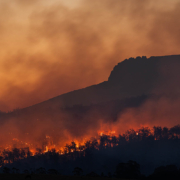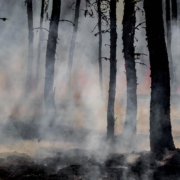Improving Air Quality and Respiratory Health in Indigenous Communities
Indigenous communities are taking action to manage and improve air quality. Indoor and outdoor air quality are affected by weather and climate change effects. As noted in Chapter 2 of the Health of Canadians in a Changing Climate Report, changes in ground-level ozone, increases in airborne pollutants due to warmer temperatures, and smoke due to extreme wildfires, all negatively affect air quality and Indigenous respiratory health.
Sioux Lookout First Nation Health, the Nishnawbe First Nation, Health Canada, and university researchers conducted a research study to measure indoor air quality, explore its links with high rates in respiratory infections among Indigenous children, and find solutions. Study findings were published recently and supported efforts in the Sioux Lookout Region to address associated factors in indoor air quality, such as poor housing conditions, including repairs. and lack of functioning controlled ventilation.
The British Columbia Centre for Disease Control (BCCDC) notes that fine particulate matter in wildfire smoke poses the greatest risk to respiratory health. However, remaining confined indoors during a wildfire poses additional health complications, including mental health impacts and physical inactivity. In 2014, Yellowknife Dene partnered with Ecology North and created videos to show how they organized physical activities to escape from the “Summer of Smoke” and social activities to prevent the isolation of community members.
Changes to both physical infrastructure and social activities within Indigenous communities can go far to improve air quality—a serious factor affecting Indigenous health in a changing climate.
By Leela Viswanathan
(Image Credit: Vlad Kutepov, Unsplash)




 Matt Howard, Unsplash
Matt Howard, Unsplash
 John Towner
John Towner

